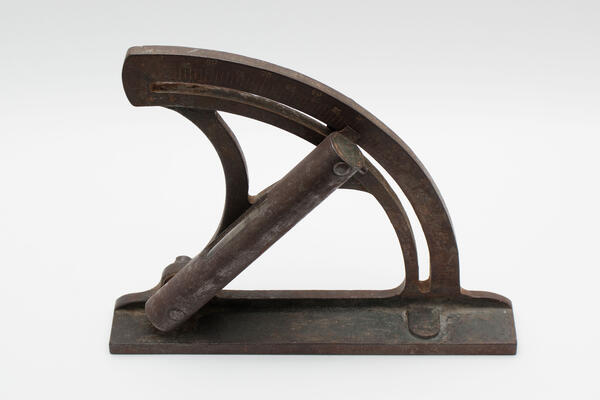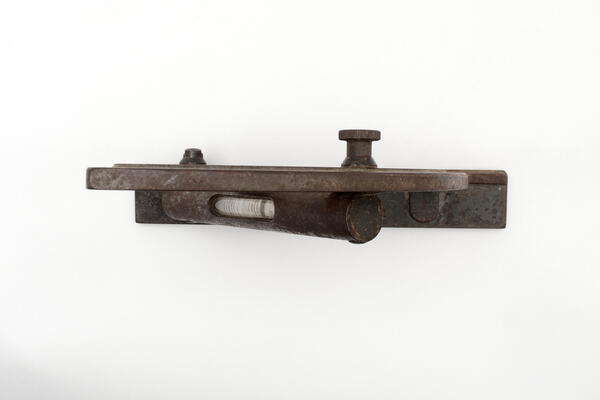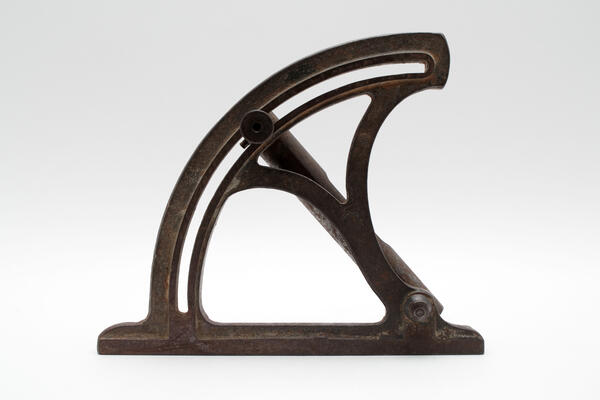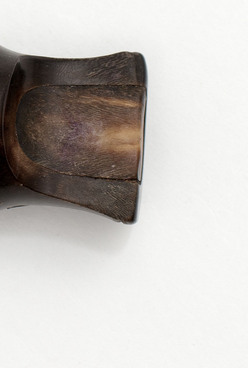The item on display is a brass inclinometer made in the early 20th century. It features a built-in level used for measuring the slope of surfaces. The inclinometer consists of two parts fixed on one axis. Together they form a movable triangle with a degree scale. The level is designed to indicate whether a surface is horizontal or vertical as well as to measure the slope.
The scale of the inclinometer can be linear or circular — along the circumference of the axis of one of the arms. In some areas — for example, carpentry — adjustment of all angles is not required, and craftsmen work with several fixed angles. One of these carpenter’s inclinometers is called a “yerunok”, its arms are fixed at an angle of 45°.
To obtain accurate measurements, the inclinometer should be regularly checked for correspondence with reference values. Using such a device is simple: to begin with, a ruler is tightly pressed against one of the surfaces, and an arc scale or a second ruler is pressed against the other. The position of the arms is then fixed with a screw and the angle is determined according to the scale.
Primitive inclinometers appeared more than 5,000 years ago. Ancient Egyptians and Ancient Romans used them for construction. These simple devices consisted of two sticks fastened together on one side. Babylonian scholars noticed that the visible diameters of the Sun and the Moon are 1/180 parts of the firmament, and began to divide the straight angle into 180 equal parts. European mathematicians considered angles only up to 180 degrees until the 17th century.
The word “gradus” in Latin means “step”. The modern system of dividing angles was introduced in 1558 by the French mathematician Jacques Pelletier: a right angle is divided into 90 degrees, a degree is equal to 60 minutes, and a minute is 60 seconds.
Along with this unit of measuring angles, the Benelux countries — Belgium, Netherlands and Luxembourg — also use a metric system-inspired unit of measure. A right angle is divided into 100 gradians, and a centesimal arc-minute is divided into 100 centesimal arc-seconds.
The simplest household instrument for measuring angles is a standard protractor familiar to everybody from school. In production, angles are measured in degrees, minutes and seconds by means of magnetic, optical, digital, and laser inclinometers. Sailors divide the straight angle into 16 rhumbs.





